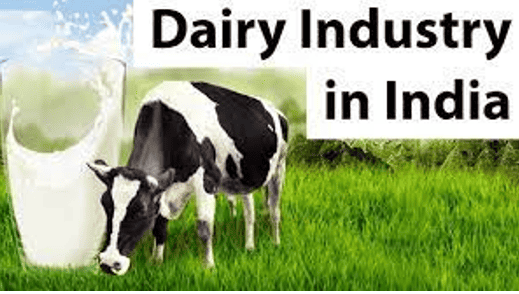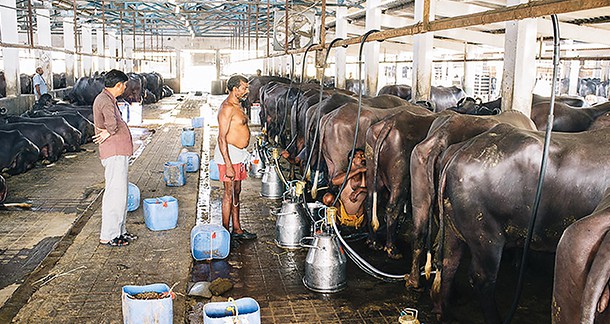
India is the world’s largest milk producer, accounting for around 20% of global milk production. The country produced around 198 million metric tonnes of milk in 2020-21, according to the Department of Animal Husbandry and Dairying. The sector has been growing at a compound annual growth rate (CAGR) of around 6% over the past decade.
The Indian dairy sector is largely driven by the cooperative model, with the National Dairy Development Board (NDDB) playing a key role in promoting and developing dairy cooperatives across the country. The cooperative model has been successful in improving milk productivity, quality, and profitability for small and marginal farmers.
The dairy sector in India has a long and rich history, dating back to ancient times. In fact, milk and milk products have been an integral part of the Indian diet for thousands of years, and the country has a rich tradition of dairy farming and milk-based cuisine.
During the Vedic period (1500-500 BCE), milk and its products like ghee and curd were considered sacred and were used in religious ceremonies. The period also saw the domestication of cows and buffaloes, which laid the foundation for the dairy sector in India.
In the colonial era, the British introduced modern dairy farming practises in India to meet their milk and meat requirements. The first modern dairy was set up in 1885 in Aundh, Maharashtra, which was followed by the establishment of the Bombay Milk Scheme in 1948 to supply milk to Mumbai city.
Post-independence, the Indian government initiated several programmes to develop the dairy sector, with a focus on improving milk production and creating livelihood opportunities for small and marginal farmers. The most significant of these programmes was Operation Flood in the 1970s, which was the world’s largest dairy development programme. The programme was aimed at increasing milk production, developing the cooperative movement, and enhancing the quality of milk.
Today, the dairy sector in India is one of the largest and fastest-growing in the world, with milk production increasing from 17 million metric tonnes in 1950-51 to around 198 million metric tonnes in 2020-21. The sector has been a key driver of rural development, providing livelihoods to millions of small and marginal farmers across the country.
The sector faces several challenges, including low productivity, poor infrastructure, inadequate access to finance, and a lack of market linkages. However, there is significant potential for growth, especially in value-added products like cheese, yoghurt, and butter, as well as in the export market.

The Indian dairy sector has been witnessing several innovative practises in recent years, particularly in the areas of technology, processing, and marketing. Some of the key innovations in the Indian dairy sector are:
Milk ATMs: Milk ATMs are vending machines that dispense milk in small quantities. They are becoming increasingly popular in India, particularly in urban areas, as they provide consumers with fresh and hygienic milk at any time of the day.
Mobile milk testing labs: Mobile milk testing labs equipped with state-of-the-art technology have been introduced to ensure the quality of milk at the collection centres. These labs test milk for various parameters like fat, protein, and other adulterants, providing instant results and ensuring fair prices for farmers.
Digital platforms: Several digital platforms have been launched to provide farmers with real-time information on milk prices, weather, animal health, and other important aspects of dairy farming. These platforms are helping farmers make informed decisions and improve their productivity.
Value-added products: Dairy companies in India are increasingly focusing on value-added products like cheese, yoghurt, and ice cream, which have higher profit margins than liquid milk. There is also a growing demand for these products among urban consumers.
Cold chain infrastructure: The Indian government has launched several initiatives to improve the cold chain infrastructure for dairy products. This includes the setting up of milk chilling centres, cold storage facilities, and transportation facilities, which are helping to reduce post-harvest losses and increase the shelf life of dairy products.
Overall, these innovative practises are helping to improve the efficiency, quality, and profitability of the Indian dairy sector, making it a significant contributor to the country’s economy.
The future of India’s dairy sector is bright and promising, with significant potential for growth and development. Here are some of the factors that are likely to shape the future of the sector:
Increasing demand for milk and milk products: With a rising population and increasing disposable incomes, the demand for milk and milk products in India is expected to grow significantly in the coming years. The increasing preference for healthy and nutritious food is likely to drive demand for value-added dairy products like cheese, yoghurt, and butter.
Technological advancements: Advancements in technology are likely to play a key role in the future of the dairy sector in India. The use of artificial intelligence, big data analytics, and the Internet of Things (IoT) is expected to improve the efficiency of milk production, processing, and distribution while reducing the cost of production.
Growing focus on quality and safety: There is a growing awareness among consumers about the quality and safety of milk and milk products. Dairy companies in India are likely to focus more on quality control measures, implementing international standards, and ensuring the safety and hygiene of their products.
Increasing role of cooperatives: cooperatives are likely to play a significant role in the future of India’s dairy sector, as they have been successful in improving milk productivity, quality, and profitability for small and marginal farmers. The government is likely to provide more support to dairy cooperatives, including infrastructure development, financial assistance, and technical support.
Export potential: The Indian dairy sector has significant export potential, with rising demand for dairy products in the global market. The government is likely to provide more support to dairy companies in developing export-oriented strategies and promoting Indian dairy products in international markets.
Overall, the future of India’s dairy sector looks bright, with significant potential for growth and development. With the right policies and initiatives, the sector is likely to become a major contributor to India’s economy and rural development.

















